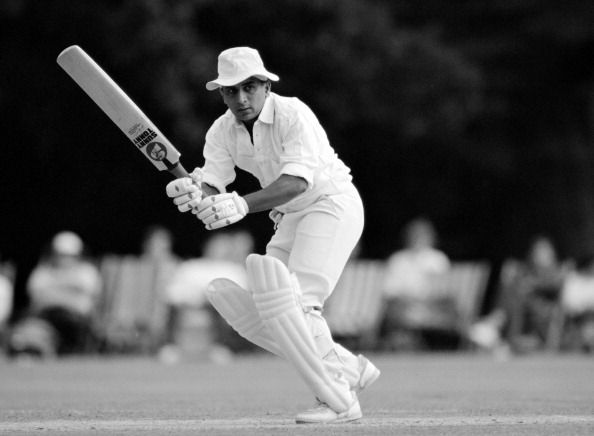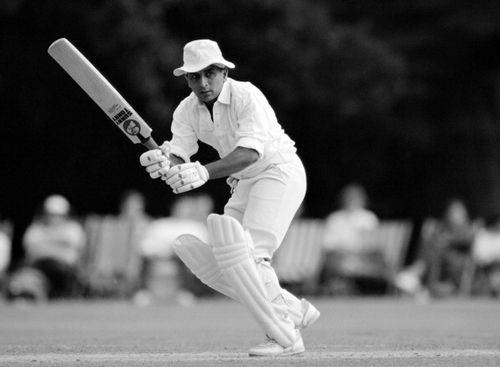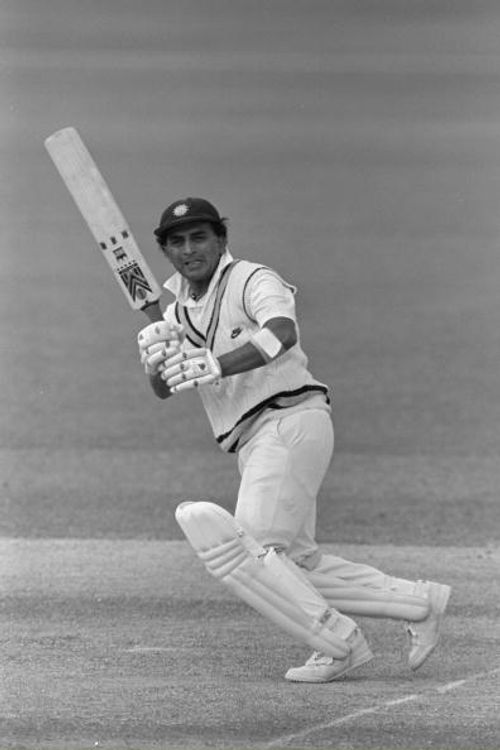
Sunil Gavaskar versus the West Indies: Part 2
In 1977, Kerry Packer came knocking and almost the entire Caribbean team welcomed him in, multiplying their earnings by accepting his generous offer. The West Indies authorities, probably worried that Packer’s World Series Cricket (WSC) posed a serious threat to the viability of West Indies and world cricket, and worried about the availability of the Packer players, sought to groom new players by replacing some older ones. Skipper Clive Lloyd saw this as unjust punishment for joining World Series Cricket and revolted by withdrawing from the team. The other WSC-contracted players joined him in solidarity and so the selectors were forced to pick a second-string team to represent the West Indies.
Instead of facing champions like Viv Richards, Gordon Greenidge, Clive Lloyd, Michael Holding, Andy Roberts and Joel Garner, opponents could bask in the relative comfort of playing against emerging or aging or mediocre players like Alvin Greenidge, Basil Williams, Sylvester Clarke, Vanburn Holder, Raphick Jumadeen and a young Malcolm Marshall. This was the situation that framed the West Indies’ visit to India for six Tests in 1978-79.
The series itself was fairly pedestrian; five of the six Tests were drawn and India won the series by virtue of a three-wicket victory in the fourth Test at Chepauk, Madras. Gavaskar reveled in the absence of the four pronged pace attack — now up and running in all its malevolent brilliance – to churn out runs in the manner he did in 1971. He ended the series with 732 runs at an average of 91.5 including four hundreds. His 107 and 182* in the third Test was his third occasion scoring hundreds in both innings of a Test – a record. Throughout, he played with the freedom and authority that marked him as one of the best batsmen in the world.

The next time Gavaskar battled the West Indies was in 1982-83 when India toured the Caribbean. By this time the Packer experiment had ended, the differences settled, and the first string players long reinstated. The feared four-pronged was again at full throttle, carrying all before them and leaving trembling and traumatized batting units in their wake. And remembering the battering they received in Jamaica in 1976, Gavaskar and the rest of the batsmen must have been apprehensive coming into the tour.
The first Test in Jamaica ended with an exciting run chase that featured an unbelievable innings by Viv Richards that led to a West Indies victory in the very last over of the game in fading light. The West Indies also won the Barbados Test to take the series 2-0.
Gavaskar was not able to dominate the 1982-83 series like he did the one before. In nine innings he could only gather 240 runs at 30, with his 147 on the placid Bourda track in Guyana being his only hundred.
Gavaskar’s performance on this tour was far below those of his two previous visits. There was talk that his batting might have been affected by the fact that he was recently relieved of the captaincy; there were also disagreements with the new captain, Kapil Dev, who, it is reported, accused him of not directing enough effort to the task of scoring runs.
And then there were those, especially from the West Indies, who felt it was simply that the Little Master had not coped well with the full force of the West Indies pace attack, which he was really facing for the first time.
But there were lesser players, Ravi Shastri for example, who were much more successful, and Gavaskar was the batsman, apart from Amarnath perhaps, best suited to handling such fiery pace. Maybe, on the other hand, it was nothing more sinister or more mysterious than the Indian run-machine going through a bad patch, like every other player.
The last Test in Antigua ended on May 3, 1983,but the two sides were at it again by late October that same year when the West Indies toured for six Tests. Sandwiched between the two encounters was the ICC World Cup in England, which India won by defeating the West Indies in the finals at Lords.
Unlike their last visit when the Packer affair robbed the team of its best players, this time the West Indies were at full strength. Intent on revenge for their World Cup loss, the West Indies won the series by a comfortable 3-0 margin. Gavaskar, however, was back in some kind of form.
He fell cheaply to a hostile Marshall (0 and 7) in both innings of the first Test in Kanpur, which the West Indies won by an innings and 83 runs. A few days later the teams journeyed to the Feroz Shah Kotla ground in Delhi for the second Test.
Encouraged by a trusted friend to be aggressive, he built a beautiful and belligerent hundred in the first innings. His 121 required only 128 balls, and was adorned with 15 fours and two sixes. It was the kind of carefree knock that few expected from the master technician, and it was especially appreciated by the large crowd because it placed Gavaskar on par with Bradman for the record of the highest number of Test centuries – 29.
His 90 in the next Test at Ahmedabad was also made with aggressive intent. Though the West Indies won this low-scoring encounter, only Jeffrey Dujon’s 98 exceeded Gavaskar’s score, and nobody played with the kind of freedom that he did.
Gavaskar failed again in both innings at the Wankhede Stadium in Bombay (Now Mumbai), and again it was Marshall who was the instigator.
The Eden Gardens, Calcutta was the venue for the fifth Test and a large crowd of about 90,000 raucous fans turned up, hoping to see their hero go past Bradman by his 30th hundred. They were disappointed. Not only did he get out cheaply both times, but they felt he was overly reckless. Some even went as far as to suggest he was undermining captain Kapil Dev. Incensed, the crowd openly vented their anger, sparing not even his wife, Marshneil, who had missiles thrown in her direction. This was the first installment of Gavaskar’s troubles at Calcutta; troubles that would lead to him refusing to play at the venue a few years later.
The sixth Test in Madras turned out to be Gavaskar’s last Test against the West Indies. His performance in the previous two games probably caused his confidence to dwindle, and he requested to be put in at four instead of his normal opening position. When India’s turn came to bat, however, Marshall immediately sent back Anshuman Gaekwad and Dilip Vengsarkar, and so Gavaskar arrived at the crease without a run on the board. Man it doesn’t matter where you come in to bat, Viv smirked, the score is still zero.
Yet it was India’s great Test batsman who had the last laugh. He signed off from the series, and from battle with his Caribbean adversaries, with a masterful 236*, then the highest score by an Indian. There was controversy along the way. The West Indians failed to acknowledge Gavaskar’s milestones because they claimed that he was clearly out when he gloved a catch to third slip. The batsman insists it came off his arm guard.
But that hardly matters. He was now the sole holder of the record of Test centuries scored and his esteemed place in history was assured. His record against the West Indies was second to none. He saved his best for his Caribbean opponents. In 27 matches he scored 2749 runs with 13 hundreds at an average of 65.45. His overall average is 51.12.
Gavaskar was a master of his craft, possessing a technique and a temperament that allowed him to counter the most fearsome bowling of his time. The West Indies only got the better of him on India’s 1982-83 trip to the Caribbean, and even then there was the 147 he made in Guyana. More often, the dimunitive Indian was a thorn in the West Indies’ side, from their first meeting in 1971, to their last in 1983. As Lord Relator sang, just like a wall, the West Indies just couldn’t out Gavaskar at all.
You can read part of Sunil Gavaskar versus the West Indies here.